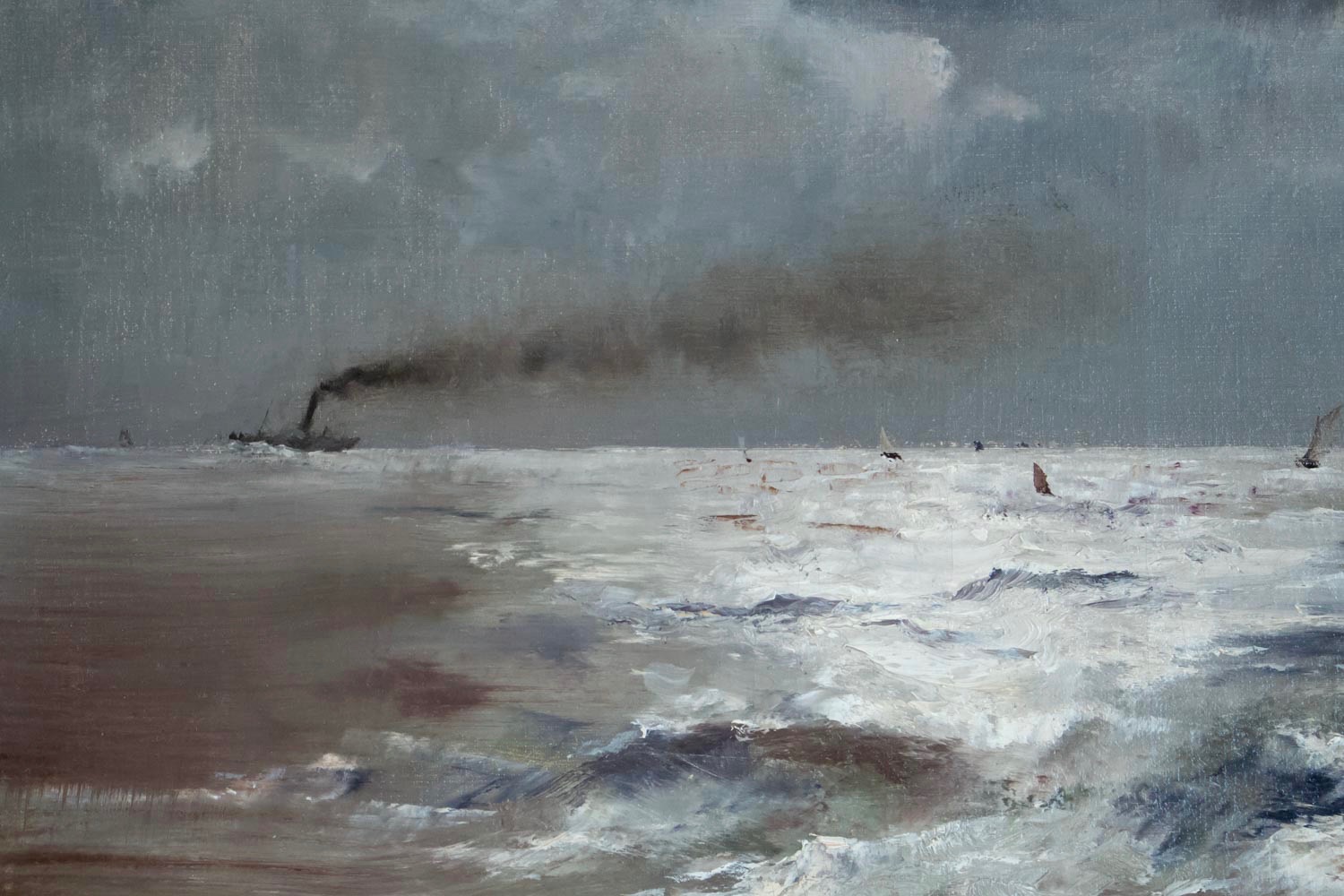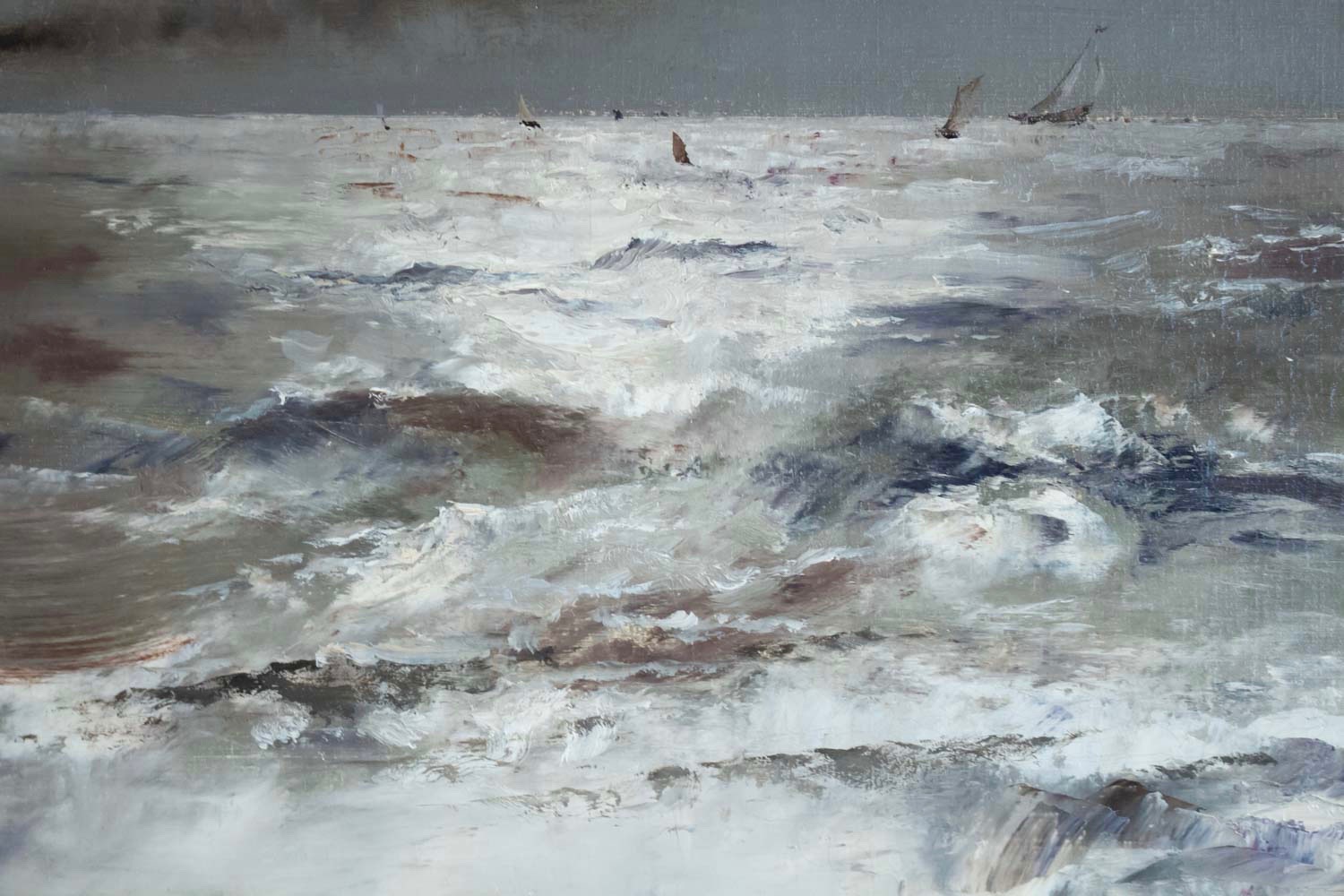Alfred Stevens (1823 – 1906)
At the stern of the boat, 1882
Oil on canvas
Signed and dated “Sept. 82”.
Dimensions: 40 x 61cm
With frame: 69 x 90 cm
Price upon request
For this seascape, Alfred Stevens offers an original point of view: he depicts the back of the boat on which he is. The furrow dug by the weight of the ship creates a perspective up to the horizon line; it catches the light and diffuses it over the entire painting. The painter indicates, with a stroke of the brush, a few veils in the background.
In the background of the image, the coal boats mark their way with the large black smoke which escapes from the chimneys. In comparison, the sailboats seem thin and vulnerable: the painter metaphorically represents the Industrial Revolution. Alfred Stevens questions the spectator: is he on a sailing boat or a motor boat?
Alfred Stevens is a Belgian painter in Paris. It plays a leading role in the dialogue between the two nations, alternately Belgian in France and French in Belgium. If Courbet, Manet, Rude and Rodin radiated throughout Belgium, the attraction towards France was so strong that many Belgian artists, and not the least, are considered Parisians by adoption: it is the case of Alfred Stevens.
In Paris in 1844, the painter became known for his refined portraits of the beautiful world, depicting the elegant Parisian of the Second Empire. A friend of Manet, Scholl and Baudelaire, he was admitted to the School of Fine Arts and frequented the workshop of the great master Ingres. The wave of Japonism gave impetus to his painting from 1865.
A friend of Bazille, he portrayed and developed a decorative style. Thereafter, he gradually left the slick representations of the bourgeoisie for other everyday scenes, borrowed from verismo although still elegant (see the painting “La femme au bain”, circa 1873, Musée d’Orsay). At that time, the painter knew his hours of glory. In France, Mathilde Bonaparte supports her work, the Belgian king gives her a public order.
In 1880, the painter experienced difficulties: the beginnings of a new style of painting, Impressionism, called into question his pictorial approach. His doctor sends him to Menton, he travels in the north of France. Berthe Morisot pushes him towards Impressionism which he adopts in his seascapes, whose sensitivity and modernity are in every respect similar to those of Jongking.
Bibliography:
• In 1886, he wrote the famous Impressions sur la peinture , the book was a great success and was translated into several languages. Alfred Stevens, Impressions on painting , Paris, Librairie des Bibliophiles, 1883, 96 pages.
• “Le Monde illustré”, August 18, 1883, p. 1-3.
Museums:
• In Paris, Musée d’Orsay, Musée du Louvre Graphic Arts department.
• In the provinces: Lille Fine Arts Museum, Rouen Fine Arts Museum, Reims Fine Arts Museum, Compiègne Castle National Museum, Dijon Magnin National Museum, Marseille Fine Arts Museum, Fabrice from Montpellier.





